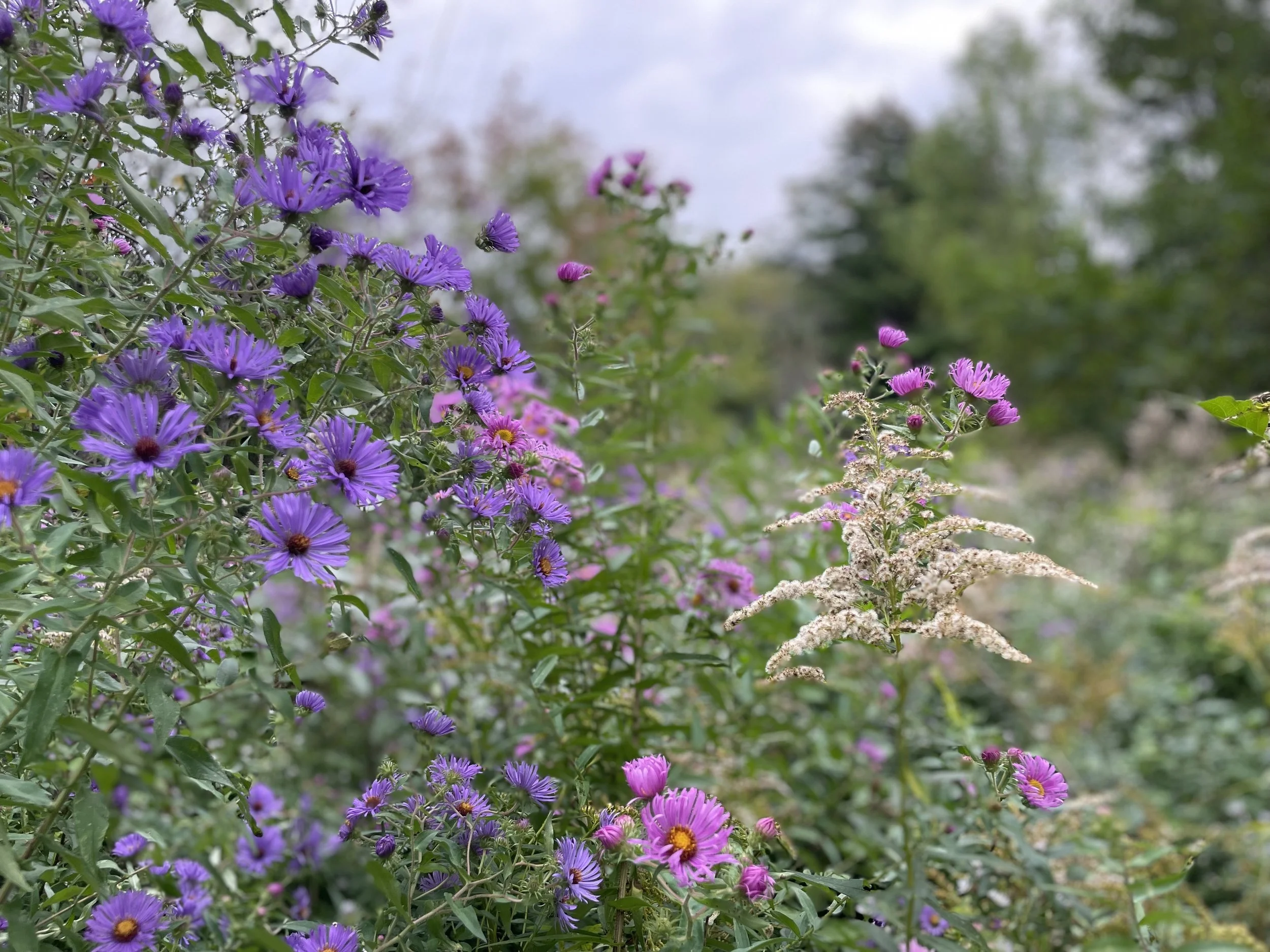Imagine yourself 5 years from now. You are walking through your backyard harvesting herbs and greens for your morning omelette. It has been two years now since you purchased eggs from the store and are still amazed at the difference. On your walk you notice the peaches are starting to ripen which is good since you just finished harvesting the blueberries.
Monarchs are flitting from flower to flower, stopping by for a drink of water from a small dish of overflow rainwater. This rainwater, collected from your metal roof has also filled your pond overnight. Your kids are counting the fish in the pond as they squeal to discover two more frogs lazing on lily pads. The ground around your trees and shrubs are soft, spongy and full of life from years of leaf litter that has been left to feed the soil.
You harvest flowers to take to a friend and you notice that the calendula petals you left in jars of oil is beginning to deepen in color. It is almost time to add this to your shelf of other oils for winter salve making projects. Birds are feasting on sunflower seeds as they fertilize the ground below them. As you rest under the grape arbor you welcome a bit of shade and notice dozens of fruit ripening on the vines. You make a note to check back on these sweet gems in a few weeks. You start to realize that you are producing more and more of the inputs in your own life, and in turn are consuming less fossil fuels all while creating more resilient systems around you.
What is permaculture?
Permaculture has gained many definitions since the term was first coined in the 1970’s . It is essentially a design method and set of strategies based on ecological principles and patterns. It draws wisdom from indigenous and traditional cultures and encompasses land use, food, water, energy, shelter, social and economic systems. Permaculture Design helps us to shift our current lens to an ecological one which can be applied to every aspect of our lives. Simply put, conventional gardening and farming works against nature in a number of ways. Permaculture Design works with nature; using it as a teacher and guide.
By slowing down, observing nature and using permaculture design as a tool and set of strategies, we can design integrated backyard ecosystems that
Decrease inputs of time, fertilizers, imported soil, materials, etc.
Increase yields of food, fiber, fuel, medicine, beauty, & fodder
Can be regenerative, self maintaining and self fertile
Can restore and renew the land (like the natural cycles of a forest)
Help us become active producers of food and medicine for our families, while simultaneously boosting ecosystem health and biodiversity
Permaculture Design
and Installation Offering:
Consultations and Design
Consultations: We offer 3 hour whole site consultations. We will look at your property through an ecological lens, assess the property as a whole and make recommendations based on your goals, the site conditions, and permaculture principles. The consultation results in a list of recommendations and design, and plant ideas. The amount of detail in our recommendations depends on the size of your property and complexity of your goals. If your property is under an acre more detail may be given, where larger properties will receive recommendations through a broader lens.
Design: If after having a consultation you would like a fully drawn property plan we will credit the cost of the consultation towards the design. We will work together on creating a working vision statement, a list of design elements, and suggested plant lists. You will receive a plan view color drawing, plant list and suggested phasing recommendations.
Implementation
Implementation of your permaculture design can be done by you and a crew, allowing for an exchange of information, tips and techniques or or by just the crew at Larkspur Design.
* We also offer one on one coaching that can range from custom educational modules to an afternoon of working side by side.
For more information about our Permaculture Design services please contact Julie at Julie.larkspur@gmail.com








